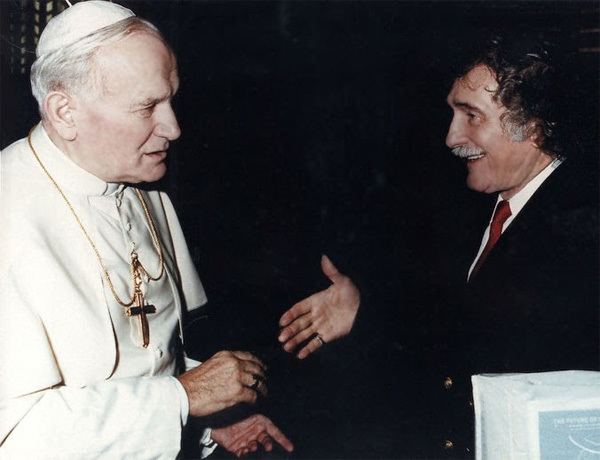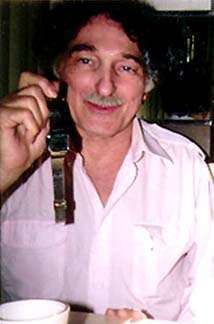Children 2 Name Andrija Puharich | Role Inventor | |
Full Name Henry Karel Puharic Residence "Devotion" (R. J. Reynolds Family Estate) Occupation Inventor, Parapsychologist, Physician Books Beyond telepathy, Uri;, Uri Geller | ||
Andrija puharich on nikola tesla
Andrija Puharich (February 19, 1918 – January 3, 1995) — born Henry Karel Puharić — was a medical and parapsychological researcher, medical inventor, physician and author, known as the person who brought Israeli Uri Geller (born 1946) and Dutch-born Peter Hurkos (1911-1988) to the United States for scientific investigation.
Contents
- Andrija puharich on nikola tesla
- Pyramids philadelphia experiment
- Biography
- Peter Hurkos
- Uri Geller
- Publications
- References

Pyramids philadelphia experiment
Biography

Puharich was born in Chicago, Illinois, one of seven children born to Croatian immigrants. His father had emigrated from what was then the Austro-Hungarian Empire, entering the U.S. in 1912 as a stowaway. At home Karel's parents always called him "Andrija," which apparently wasn't his name at birth but just his parents' nickname for him. When Karel, as a young boy, started attending school, his parents enrolled him under the name "Henry Karl Puharich," feeling he would be more easily accepted with that name than with the foreign-sounding name "Karel Puharić." Thereafter he often signed his name as "Henry Karl Puharich." He didn't start using his nickname "Andrija" as his first name until sometime in the later part of his life.

During World War II, Puharich attended Northwestern University as a student in the Army Specialized Training Program. He earned an undergraduate degree in philosophy and pre-medicine in 1943 and received his M.D. from the Northwestern University School of Medicine in 1947. His residency was completed at the Permanente Research Foundation in Oakland, California, where he specialized in internal medicine. From 1953 to 1955, he served as a captain in the Army Medical Corps; in this capacity, he was assigned as Chief, Outpatient Service, U.S. Army Dispensary, Army Chemical Center, Edgewood Arsenal, Maryland. By this time he was already presenting papers on the possible military usefulness of paranormal phenemona.
During that time, he was in and out of Edgewood Arsenal Research Laboratories and Fort Detrick, meeting with various high-ranking officers and officials, primarily from The Pentagon, CIA, and Naval Intelligence. The Edgewood Arsenal is currently officially called the Edgewood Area of Aberdeen Proving Ground.
Puharich was impressed by the stories about the Dutch psychic Peter Hurkos and invited him to the U.S. in 1956 to investigate his alleged abilities (see below). In 1960, Puharich investigated materialization séances at Camp Chesterfield, but discovered the use of cheesecloth being used to fake ectoplasm. Puharich played himself on Perry Mason television series, in the episode, "The Case of the Meddling Medium," in 1961. He conducted a series of three tests to help determine the ESP of Mason's client accused of murder. During the third test, the actual murderer was exposed.
In 1971, Puharich met Israeli psychic Uri Geller and endorsed him as a genuine psychic (see below). Puharich wrote a supportive 1974 biography of Geller, a subject he had investigated with the help of Itzhak Bentov, among others. He also investigated and thought favorably of the Brazilian psychic surgeon Zé Arigó, providing an afterword for his 1974 biographer. Puharich also investigated Mexican psychic surgeon Pachita. One of his books is The Sacred Mushroom: Key to the Door of Eternity, describes his work with psychics.
In the 1970s, Puharich claimed he had investigated the effects of a low frequency radiation beam that the Soviet Union had been testing. According to Puharich the beam was based on the work of Nikola Tesla and could be used as a weapon to control people. He also claimed the beam was responsible for climatic disturbances, earthquakes, Legionnaires' disease and violent riots. Puharich wrote Tesla was contacted several times by extraterrestrials.
Two of the most famous of Puharich's 50-plus patents were devices that assist hearing: the "Means For Aiding Hearing" U.S. Patent 2,995,633 and "Method And Apparatus For Improving Neural Performance In Human Subjects By Electrotherapy" U.S. Patent 3,563,246". He was also granted a U.S. Patent 4,394,230 in 1983 for a "Method and Apparatus for Splitting Water Molecules." His research included studying the influence of extremely low frequency ELF electromagnetic wave emissions on the mind, and he invented several devices allegedly blocking or converting ELF waves to prevent harm.
While working in Mexico, Puharich married and later divorced Rebecca Alban Hoffberger, the future founder and director of The American Visionary Art Museum.
Peter Hurkos
Puharich was impressed by the stories about the Dutch psychic Peter Hurkos and invited him to the U.S. in 1956 to investigate his alleged abilities. Hurkos was studied at Puharich’s Glen Cove, Maine, medical research laboratory under what Puharich considered to be controlled conditions. The results convinced Puharich that Hurkos had genuine psychic abilities. However the experiments were not repeated by other scientists. Puharich was described as a "credulous investigator." Raymond Buckland has written "with the exception of Dr. Andrija Puharich, not a single recognized psychic investigator has been impressed with Hurkos's performances."
Uri Geller
Puharich met Uri Geller in 1971 and endorsed him as a genuine psychic. Under hypnosis, Geller claimed he was sent to earth by extraterrestrials from a spaceship 53,000 light years away. Geller would later deny the space-fantasy claims, but affirmed there "is a slight possibility that some of my energies do have extraterrestrial connection."
In 1974, Puharich claimed he had observed Geller transmute base metal into gold by psychic power. Puharich also stated that Geller teleported a dog through the walls of his house. Martin Gardner wrote as "no expert on fraud was there as an observer" then nobody should take the claim of Puharich seriously. His paranormal claims about Geller were criticized by the psychologist David Marks.
In his biography of Geller, Uri: A Journal of the Mystery of Uri Geller (1974) Puharich claimed that with Geller he had communicated with super intelligent computers from outer space. According to Puharich the computers sent messages to warn humanity that a disaster is likely to occur if humans do not change their ways. Puharich claimed that extraterrestrial beings had communicated to him that Geller was the chosen savior of mankind and had been given the ability to contact flying saucers and perform paranormal phenomena such as psychokinesis, spoon bending, telepathy and teleportation. He also claimed to have experienced poltergeist phenomena with Geller. The psychologist Christopher Evans who reviewed the book in the New Scientist, wrote that although Puharich believed in every word he had written, the book was credulous and "those fans of Geller's who might have hoped to have used the book as ammunition to impress the sceptics. They will be the most disappointed of all". James Randi has written the biography contained "silly theories" but was "both a boost and a millstone to Geller".
